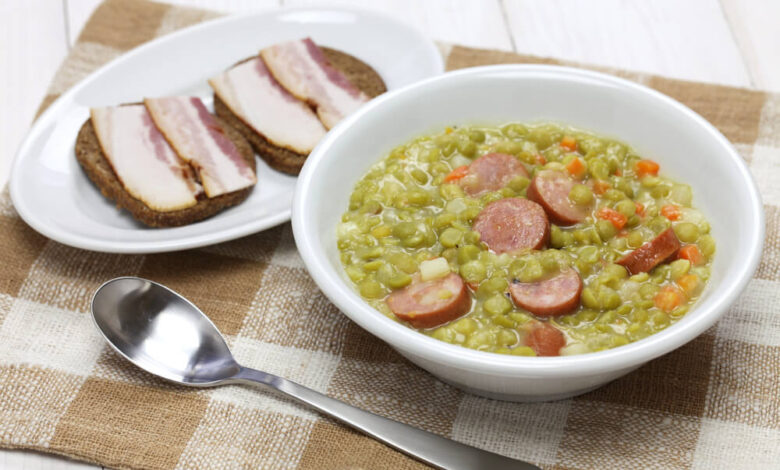
Snert, why Dutch erwtensoep is more than just comfort food
Erwtensoep, also known as Dutch split pea soup or snert, is a traditional winter staple in the Netherlands. This hearty soup made from split peas, pork and vegetables has been cherished for centuries for its warming and nourishing qualities. But what makes erwtensoep so special? And how has it evolved from a simple peasant dish to a modern culinary delight?
From peasant roots to culinary classic
The roots of erwtensoep date back to a time when Dutch winters were harsh and resources were scarce. Split peas, the main ingredient of the soup, were inexpensive and easy to store, making them a practical choice for families looking to create a filling meal. Pork, often in the form of bacon or smoked Dutch sausage, was added to provide protein and flavor while root vegetables like carrots, celery and leeks gave the dish a nutritious boost.
One notable feature of traditional erwtensoep is the inclusion of pork rind. This ingredient not only added richness to the soup but also ensured that no part of the animal went to waste – a testament to the frugality of Dutch cooking in earlier times.
A meal fit for the cold
Erwtensoep’s thick, stew-like consistency made it ideal for sustaining energy during long, cold days. It was often prepared in large batches, as the flavor improves after resting overnight. Served with slices of rye bread topped with smoked bacon or cheese, erwtensoep provided a complete, satisfying meal that warmed both body and soul.
From old-fashioned to contemporary
While many still associate snert with the old-fashioned Dutch cuisine, it has seen a resurgence in popularity as chefs and home cooks reimagine the dish. Modern versions often feature twists like adding fresh herbs, using vegetarian or vegan substitutes for the meat or incorporating international spices for a new depth of flavor. Despite these innovations, the essence of erwtensoep remains: a comforting, hearty soup.
Why erwtensoep remains a favorite
Even in today’s fast-paced world, erwtensoep continues to hold a special place in Dutch culinary tradition. It is a dish that evokes nostalgia, connecting people to their heritage and the simple pleasures of slow-cooked, wholesome food. At the same time, its adaptability ensures it remains relevant in contemporary kitchens.



